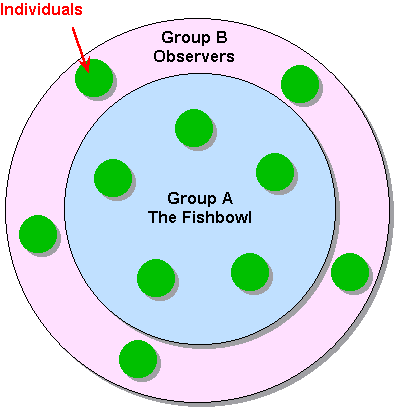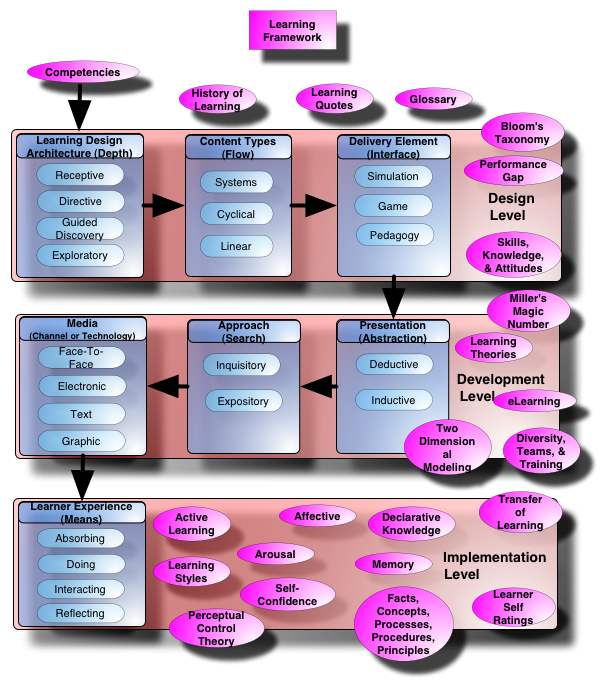Fishbowls in Learning Environments
Fishbowls are used for dynamic group involvement. The most common configuration is an "inner ring" (Group A), which is the discussion group, surrounded by an "outer ring" (Group B), which is the observation group. Just as people observe the fish in a fishbowl, the "outer ring" observes the "inner ring".

Where as most small groups normally have 3 or 4 learners, the fishbowl normally has 4 or 5 learners in group A, and 4 or 5 learners in group B. This tends to get the discussions going better as people are normally somewhat self-conscious about being observed. Once the learners get used to each other, then you can reduce the size of the groups. If the anxiety of being observed is too great to do the activity, have them discuss it. The anxiety should dwindle once it comes out in the open. They will get a lot more out of the activity if they are not inhibited in the discussion. The most that you should ever have in each group is 10 learners (10 performing and 10 observing). Too large of groups allows some of the learners to "hide" (not contribute).
Group A is given an assignment, such as a discussion or exercise to perform, while group B observes. After 10 to 30 minutes, the groups exchange (group A observes while group B performs the activity). They can either perform the same activity, a modified version, or a new activity.
The group observing will either observe the process, the content, or both depending on the desired outcome. In the example exercise listed below, the learners are mainly observing a process as the desired outcome is to learn "observable behavior." While another fishbowl exercise might have the observers concentrate on the content so that a process or procedure might be improved.
After the activity, you can have each group give feedback to each other, either on a group to group basis, individually, or in pairs. If you feel that the learners are not ready for public feedback, use the one-on-one or two-on-two method.
A couple of different configurations:
- Place an empty chair in the inner-circle. A person from the outer-circle may sit in it at any time and interject her or his viewpoint or comment for 1 minute (or a given time period.)
- Every 3 or 5 minutes, a member of the outer-circle replaces someone in the inner-circle. This continues until everyone has had a chance to participate and observe.
- Once the inner-circle has performed or at a set time or procedure, they turn around in their chairs and receive feedback from the outer circle on a one-on-one basis.
And the most important part of any activity — ensure you have some pre-planned questions to ask the learners once they are assembled back into a large group. This is where the real reflection often occurs.
For an example of a fishbowl activity see Performance Appraisals


